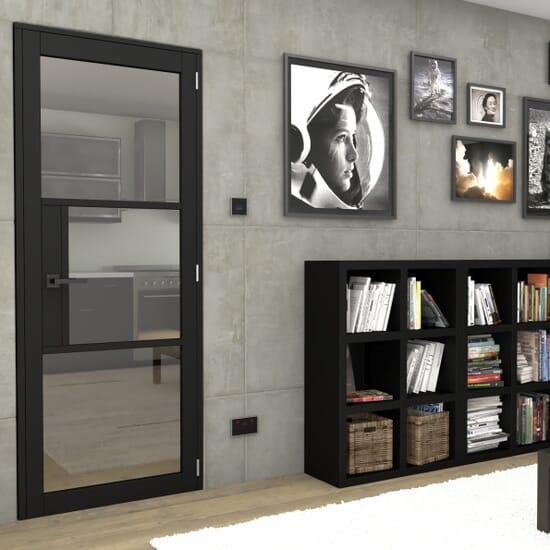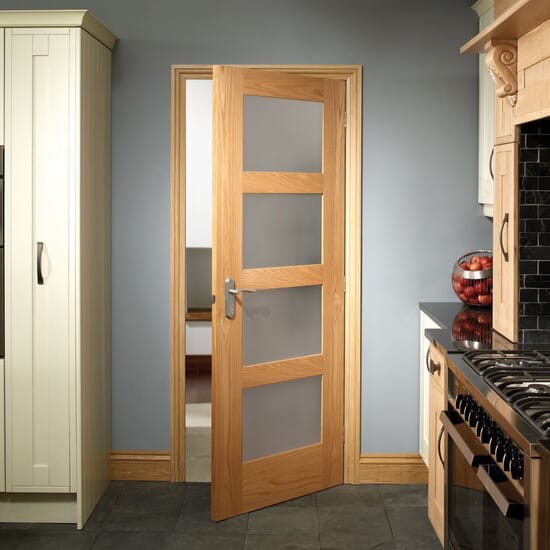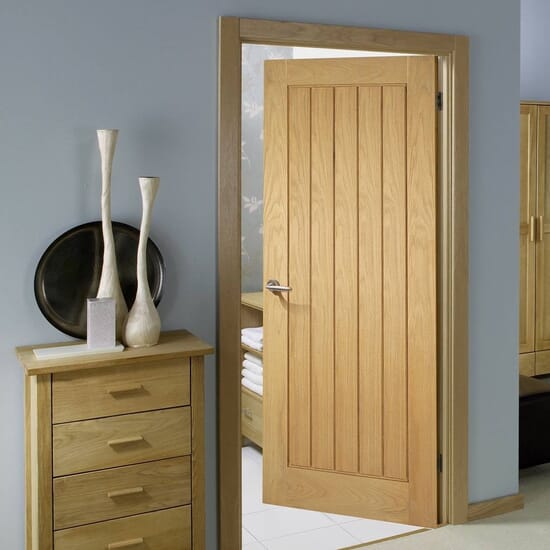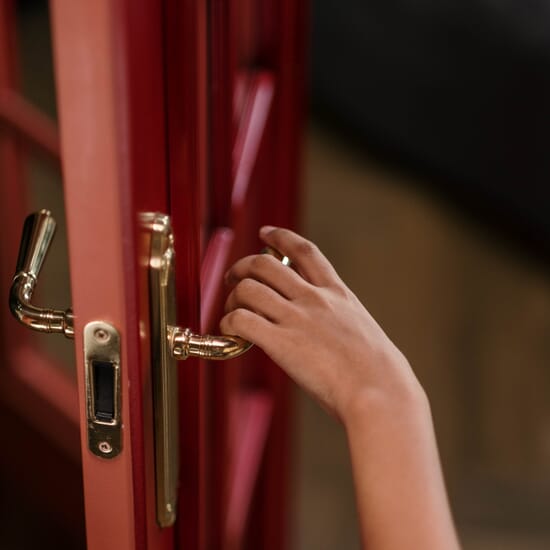General External Bifold Door Maintenance
Bifold door problems occur only when they have been neglected, to ensure a well maintained door, clean and care for it every 6 months with a deeper clean every 12 months.
Toothbrushes are a must for timber bifold maintenance as, if used gently, they won’t harm the surface area but they will effectively remove stubborn dirt and stains. Make sure you do your research before using any sort of toothbrush or cloth on your frames as using incorrect products could cause more harm than good.
For general maintenance, you must lubricate your door to ensure it runs smoothly on its tracks and doesn’t squeak. You can get many types of lubricants for bifold doors, all with different properties, and finding the best one for your type of bi-fold may take a little research on your part. We’ve found that WD40 is the best lubricant for bifold doors as it can be used on wood, metal, rubber and plastic, and can withstand temperatures between -35°c and 200°c. What’s more, a silicone based WD40 is waterproof and applies a non-stick surface that resists dirt, which is brilliant for the tracks on your external doors.
How To Clean Bifold Patio Doors
Cleaning bifold patio doors doesn’t need to be done regularly, most households say they give their bi-fold doors a general wipe over and clean once a year, however a little basic care every couple of months results in a longer lasting bifold door. Bifold doors come in an array of materials and each material and finish needs a slightly different care plan.
How to Clean Wood Bifold Doors
The easiest way to clean wooden patio doors made is to first give the door a light dusting using a feather duster or clean cloth. Spray some all-purpose cleaning solution onto the wooden frame and gently rub with another clean cloth. Once dry, using warm water and soap, wipe the wooden frame to give it one last overall clean, but don’t use too much water as it’ll seep into the wood and cause it to expand.
If you are left with stubborn stains, gently brush the stains with a toothbrush and some more all-purpose solution to remove safely and effectively. Besure not to brush too vigorously as this could mean you remove any protective vanish from the surface of the wood. Gently dry off the bi-fold doors with a clean and dry cloth.
How to Clean Aluminium Bifold Doors
Aluminium bifold doors tend to be easier to maintain than wood as they can withstand harsh weather a lot more. If your aluminium doors haven’t been treated with a powder-coating and aren’t painted, a light coating of WD40 should do the trick and keep them protected for the next few months. To clean aluminium bifolding doors simply wipe them clean with an all-purpose cleaning solution and a clean cloth. If you encounter any hard-to-clean patches, lightly brushing over the stain with a toothbrush should remove it.
How to Clean Patio Door Tracks
Patio door tracks rarely need maintenance, especially if your doors have been closed for a few months in the colder seasons, but a little TLC is required once a year.
Cleaning your door tracks is quick and simple if you have a toothbrush and multi-purpose cleaner to hand!
Spray the track with multi-purpose cleaner and leave to sit for 30 seconds, grab a toothbrush and gently start to remove any dirt. Once all dirt has been lifted, use a cloth to wipe it away. For extra care, spray WD40 along the track moving the door back and forth to ensure the track and door has been completely covered to prevent them from sticking.
How to Clean Patio Door Windows
This may seem like a simple task but factors, such as the products you use and the time of day you decide to clean your patio door windows, will impact the end result. More often than not, you sit down after a quick spring clean and notice pesky streaks and smears on the glass from the soap suds leftover by the off-the-shelf cleaning solution that you used.
The best way to clean patio door windows, without any leftover streaks, is to use a solution made from white distilled vinegar and softened water mixed together in a spray bottle, wiping down with a clean sponge or 100% cotton cloth. Purchasing a squeegee blade is a must for a streak-free window, too! Before your cleaning solution has had time to dry, use a squeegee either horizontally or vertically to wipe away any left over drips to avoid smears.
The time of day also impacts the overall finish of your window; clean your bi-fold patio windows early in the morning, later in the evening or on cloudier days, out of direct sunlight to avoid your solution drying before you manage to wipe away the residue.
Tip: Use toothpaste and a cloth over small scratches on your glass; this acts as a filler and will remove the appearance of marks.
Winter Proofing Bifold Doors
During winter, wooden bifold doors can take a bit of a beating when exposed to harsh weather. Snow and rain can cause wood to crack and doors to stick to their frames if it hasn’t been cared for and treated correctly ahead of the cold and damp.
How to Winter Proof a Bifold Glass Door
Bifold glass doors are the biggest source of heat loss during the colder seasons. Winter proof your patio doors by coating them in varnish before the cold weather is upon you, as this will give the wood enough time to completely absorb the varnish through its many layers and create a barrier against any moisture. Applying a generous amount of WD40 to the handle, lock and tracks will prevent them from sticking when the weather gets cold and damp.
If you have a painted wooden door, winter proof your patio door by reapplying paint anywhere where the original wood is visible. Paint on an external wooden door is a great barrier to protect the material from the elements, don’t let it be ruined by a tiny section where paint has flaked off!
How to Insulate Patio Doors
Insulating patio doors is something that needs to be thought about at the purchasing stage. Patio doors cause a lot of heat loss compared to solid, wooden doors and so they must be insulated accordingly. Start by purchasing double, or even triple glazed windows for your door. The air is trapped between the glazing resulting in a reduced loss of heat through your doors and windows.
Internal and external doors are created ever-so slightly smaller than its frame to minimise sticking, however in return, this then means bifold doors leak air in from the outside. To insulate your patio door from cold winds, you will need to fit a weather seal. A weather seal acts as a draught excluder except it’s spring-based so you don’t have to do any of the work after installation! When the door is opened, the weather seal will pop up and then drop down once the door has closed which acts as a solid barrier over the top of the gap between the door and frame.
We also have a handy guide on how to adjust external bifold doors to keep them in top shape and our guide on different bifold patio door types will help you choose the right material for your needs and budget.
Now that you know the right way to care for your external bifold door, check out our full range of external bifold doors to find the right one for your home. If you have any questions, get in touch with our friendly customer service team who will be happy to help.
In Summary
General maintenance is essential when dealing with external bifold doors as the weather is its biggest threat. In the UK, we experience a lot of damp and rainy days, so treating and caring for your bi-fold doors straight after installation should be high on your priority list to avoid any damage occurring. Bifold doors aren’t in need of a lot of care and attention but by making sure they’re properly varnished, oiled and cleaned every 6 months or so will ensure a longer lifespan for your external doors.







